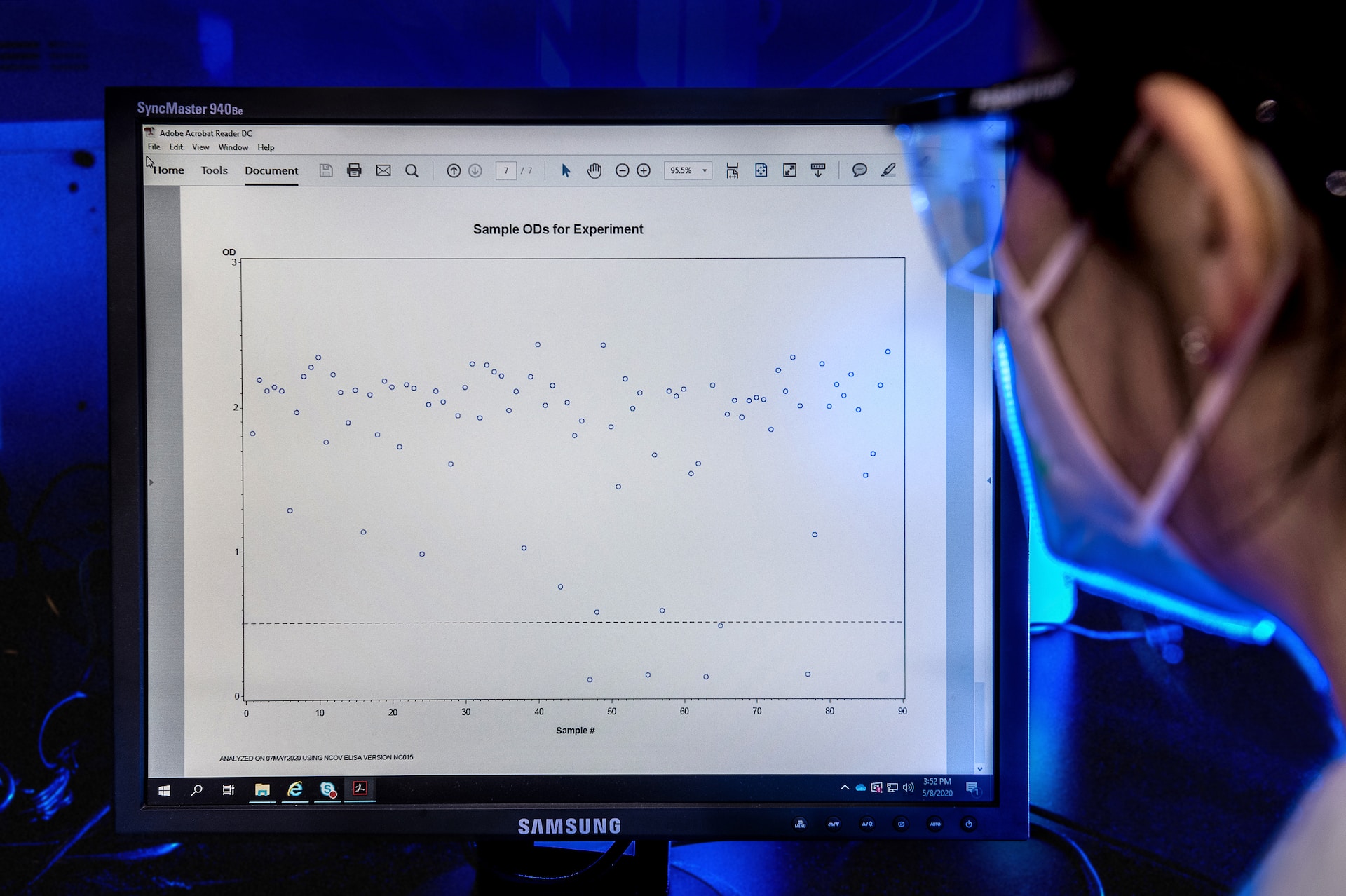
Insights
How To Retain Clinical Data Management and Biometrics Talent
13 Nov, 202310 minutesThe average turnover of research and analysis professionals within the trial environment rea...

The average turnover of research and analysis professionals within the trial environment reached 30% in 2020. Clinical Data Management and Biometrics experts alike are crucial to the success of any trial or submission for regulatory approval, and their attrition poses significant issues to CROs following the COVID-19 pandemic.
Figures from global accountancy and consulting firm BDO show that turnover rates amongst US clinical trial professionals continue to trend upwards, with 32% of staff engaged in the discovery and preclinical, early, mid, and late clinical stages of the trial process searching for new roles in 2021.
This guide not only explores vital methods of retaining talent in the field of Biometry but also aims to elaborate on how the process of reducing the turnover of Biometrics professionals within the clinical trial environment begins with a robust attraction and onboarding strategy.
Before this, though, we’ll look at the impact of high turnover in the fields of Biometrics and clinical trials, and what it means for research initiatives and the wider field of healthcare and pharmaceuticals.
The Impact of High Staff Turnover on Biometry
Whilst 2022 saw an encouraging growth in the number of site-based and decentralised clinical trials taking place—by around 10% in comparison to 2021’s figures—staff turnover remains high within the industry. This is particularly true amongst candidates with a competitive and highly marketable skillset in analysing and reporting participant and pharmaceutical data.
These experts leave the environment for a number of reasons, but the most commonly reported issues when it comes to retaining talent include:
- The pursuit of higher salaries and career advancement
- Burnout and stress resulting from high workloads, increasing trial complexity, and often long hours
- A lack of workforce diversity among trial colleagues
With some sites in the US reporting attrition rates of up to half of their staff, it’s crucial to understand just how this high level of turnover impacts the progress and success of trials.
1. Increased Cost of Site-Based and Decentralised Clinical Trials
High levels of staff turnover among Clinical Data Management and Biometrics professionals typically lead to the increased cost of both site-based and decentralised clinical trials. A poor hire can cost a business an average of around 30% of that individual’s first-year salary—with senior and executive staff often resulting in even higher costs if they choose to move on.
Onboarding and training costs can have an impact on a lean Clinical Research Organisation, whilst searching for new staff, advertising roles to the public, evaluating applications and interviewing potential candidates also lead to additional expenses.
2. Inadequate Data
Staff turnover within the clinical trial environment leads to additional pressures on those who remain. These repercussions contribute to a diminished quality of work and staff morale across the trial environment and can ultimately harm the collection and overall quality of the data produced by trial activities.
Of course, the impact of inadequate data isn’t limited to the trial organisation alone—failing to achieve regulatory approval due to poor submission quality impacts overall public health, with those who could benefit from the drug or device being trialled continuing to suffer a diminished quality of life.
3. Delays or Trial Terminations
Retaining talent is key to the efficient and smooth running of clinical trials, but high levels of staff attrition can often cause disruption in the analysis and management of participant data and lead to broader gaps in institutional knowledge.
This can make it difficult—or even impossible—to successfully execute trial activities, as new members of the Biometry team need time to get up to speed on procedures, protocols, and technologies. This instability can lead to further turnover, as staff become frustrated with the lack of trial success and subsequent reputational damage that can result.
As we’ve seen, the impact of attrition on overall trial success can’t be understated. With the fallout of the COVID-19 pandemic continuing to have an impact on many research organisations’ pipelines, and a subsequently slow return to the studies that were postponed as a result of Clinical Data Management staff turnover, it’s clear that hiring managers and business leaders within the clinical trials industry need to address this high level of turnover. But how can it be done?
Connecting with Clinical Data Management Professionals in Biometry
Before we look at some strategies for retaining talent in Clinical Data Management and Biometry, it’s important to stress that effectively reducing workforce attrition begins with a robust approach to attraction and onboarding. Professionals in these fields possess skillsets that are in high demand, meaning that if you’re not putting in place a solid employee value proposition (EVP), you’re likely not attracting the talent you need to achieve success in the first place.
First and foremost is understanding whether your organisation's remuneration and other benefits are competitive within the current market. Simply researching the average Biostatistician salary, for instance, is likely to give you a skewed example that doesn’t take into account global increases in the cost of living, the increasing cost of achieving an advanced degree in the life sciences, or the salaries on offer from the other industries that those with expertise in Clinical Data Management and Analysis could secure by moving to a different sector.
As a result, it’s important to thoroughly study the salaries and additional benefits on offer across the industry. This research can be time-consuming, but connecting with an expert consultancy in the life sciences can help give you a better idea of what candidates expect from their employers in 2023.
The Importance of Diversity in Clinical Data Management
Moving on, it’s similarly vital that materials relating to the role—or roles—that you’re advertising for aren’t excluding candidates who could help you to achieve success and enhance productivity, particularly when it comes to attracting life science and clinical research professionals from diverse backgrounds.
Tufts Centre for the Study of Drug Development ran a comprehensive investigation of 3,187 trial sites—representing around 40% of industry-funded clinical trials from across the globe—and found that, almost unanimously, those research organisations with higher levels of racial and gender diversity amongst staff were able to attract and retain a more diverse pool of participants, enhancing the relevance and robustness of the data produced.
In short, diversity isn’t just a bonus for attracting the staff you need to succeed, but for attracting the trial participants who will also improve research and development initiatives.
Your commitment to EDI as a clinical research organisation ought to be at the forefront of your advertising materials for any role, supported by mission statements, training programmes, and internal policies and procedures that reinforce workforce diversity and minimise the risk of excluding the ideal candidate simply because of their background.
Empowering Biometry through Emerging Technologies
Alongside this guidance, it’s important to consider how technology is used within your Clinical Data Management and Biometry roles.
Candidates with the right blend of experience and skills within these fields are often attracted to organisations that can offer them an opportunity to work at the cutting-edge of data and life science, so ensure that you’re keeping up to date with the tools, languages, and technologies that will help them to achieve results and augment or automate the repetitive tasks that take their focus away from their primary responsibilities.
If you’d like to learn more about the impact that automation, artificial intelligence, and big data are having across the wider field of Biometry, see our recent guide to The Role of Technology in Modern Clinical Data Management for expert insights into the trends that are revolutionising the industry and empowering innovation, and ideas on how you can leverage these advances to enhance your ability to attract candidates to apply for your vacant roles.

Retaining Talent in Biometry: The Keys to Success
Now that we’ve gained a better understanding of the role that a robust talent attraction strategy plays in retaining talent, we’re able to address retention-specific actions that you can take to reduce Clinical Data Management and Biometrics staff turnover.
1. Skill and Knowledge-Development Opportunities
Clinical research professionals are driven by the value that the studies they’re working on add to the world and participants’ lives. A 2022 publication in the Journal of Multidisciplinary Healthcare found that additional research training helped these professionals not only perform better in their roles, but also led to higher levels of engagement and motivation as they moved through their careers.
It’s important to work closely with your Clinical Data Management and Biometry staff to understand the tools, technologies, and competencies they need to succeed in their roles. This will enable you to provide a tailored training plan for all staff, evidencing your commitment to honing their unique skills.
2. Clear Paths for Progression and Salary Enhancement
Despite high levels of turnover, Biometry and Clinical Data Management remain competitive fields. Organisations that find themselves struggling with retaining talent—or attracting it in the first place—could do well by looking at the barriers that stand in the way of connecting with candidates, including requiring significant amounts of experience for ostensibly entry-level positions.
By opening up your talent pool to candidates with the ambition and skill to succeed who might otherwise be turned away due to a lack of work history and developing robust training programmes to get them up to speed, you can then outline clear paths they will progress along.
Encouraging these candidates to transition across roles within Clinical Data Management to develop a well-rounded skillset can help foster loyalty for an organisation and enable them to carve their own niche within the industry.
3. Embracing Hybridity and Decentralised Clinical Trials
Like many fields, Biometrics often requires candidates to be on-site for the duration of a study. However, as we move towards a future of work that embraces hybrid and remote ways of completing our tasks—especially with the advent of decentralised clinical trials—employees will increasingly move towards those employers that respect their autonomy and give them the opportunity to complete those tasks that don’t require office attendance or collaboration from home.
As highlighted in an article published in the August 2023 edition of the Journal of Clinical Oncology, Clinical Data Management and other research staff often cite a lack of flexibility as a reason for seeking a position with another organisation. Remote and decentralised clinical trials allow staff and participants to benefit from not having to travel unnecessarily—of increasing importance within rare disease trials, where participants average around 135 miles to reach trial sites.
With 97% of professionals preferring to work from home at least some of the time, it’s vital that CROs looking at strategies for retaining talent consider offering flexibility to their existing employees, enabling them to carry out their duties off-site where possible.
4. Providing Additional Resources to Combat Burnout
Whether it’s hiring additional, contract-based personnel for specific projects to mitigate the stresses of an excessive workload, or providing training focused on organisation and scheduling, there are a handful of ways that clinical research organisations can reduce the level of burnout experienced by professionals in Biometry.
Offering mental health support and employee assistance programmes can help to encourage your staff to embrace healthy behaviours in the workplace, but it’s important to lead by example.
If early-career or mid-level employees see their line managers or executives working through their breaks, putting in excessive overtime to achieve targets, or failing to care for their own well-being, they will likely fail to mitigate burnout. Change comes from above, so ensure that you’re setting the right example for your Clinical Data Management staff.
5. Create a Supportive Environment and Encourage Staff Contribution
When implementing strategies to retain talent in Clinical Data Management or Biometry, it’s crucial to consult staff to understand their needs. Not only can this help to ensure that any initiatives are targeted to the specific issues that have been identified, but it can be an ideal way to illustrate that you value your employees’ contributions and you wish to empower them to make business-critical decisions.
At the same time, by creating a transparent, supportive workplace, you can help staff support one another in overcoming burnout or working through stressful projects and deadlines, fostering a sense of belonging.
It’s also crucial to make sure that you’re celebrating staff that go above and beyond by putting in place a culture that incentivises recognition and rewards performance and productivity. This is an effective way to boost morale and offer an example of what good looks like—helping to clarify objectives and outline how career development works for early-career employees and recent hires.
Alongside these suggestions, frameworks—such as guidelines published through the Joint Task Force for Clinical Trial Competency—can help business leaders, line managers, and those in charge of hiring for clinical data roles to construct job descriptions that help staff understand their responsibilities and minimise the likelihood of burnout.
Organisations across the clinical trials sector continue to struggle with the attrition of Clinical Data Management and Biometric staff, but this problem has resolutions that can help to make employees feel valued, provide them with a path for career progression, and understand and communicate their training needs.

Key Findings
The attrition of Clinical Data Management and Biometrics professionals poses a significant challenge for organisations across the clinical trial industry. High levels of turnover have far-reaching consequences, from increased costs and inadequate data quality to delays in trial execution or even potential termination.
To address this issue, it’s important that business leaders, hiring managers, and line managers adopt a multifaceted strategy for their initiatives aimed at retaining talent.
Starting with a strong approach to attraction and onboarding—one that considers competitive salaries, workforce diversity, and the use of cutting-edge technology—can go a long way to creating an environment that supports skill and knowledge development.
At the same time, clear pathways for career progression and salary enhancement, flexibility in working arrangements, and providing resources to combat burnout and stress are all essential components in retaining talent in Biometry. Involving staff in this decision-making process, fostering a supportive culture, and recognising exceptional contributions can similarly improve morale and job satisfaction, in turn reducing attrition.
By implementing these strategies, organisations in the clinical trials sector can retain their valuable talent, ultimately contributing to the success of their research and development initiatives and empowering the broader fields of healthcare and pharmaceuticals.
Specialist Biometry Recruitment Assists You in Retaining Talent
Warman O’Brien’s expert consultants have been helping businesses across the trial and drug development sector to connect with Clinical Data Management professionals for almost two decades. Since our founding in 2005, we’ve expanded our presence to the US and Asia Pacific regions, alongside our base in the UK, providing a range of services that can assist those organisations that find retaining talent challenging.
Our life science recruiters cover roles at all levels of seniority, supporting contingent and permanent roles from entry-level to executive. We’re specialists in hiring and staffing projects for clinical research organisations, as well as the broader life sciences, and continue to present at industry-recognised conferences such as PHUSE, PharmaSUG, and the American Society of Cell & Gene Therapy’s annual meetings, giving you the confidence that your hiring needs are being handled by consultants that understand your specific requirements. Contact us today to discuss your needs.


